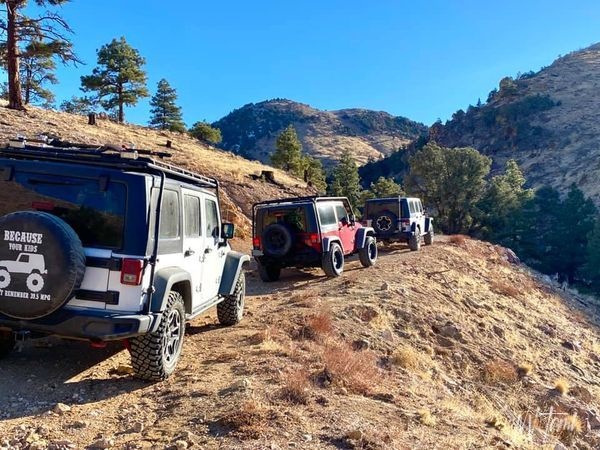
During the Silver Rush roads were very difficult and time consuming to construct, especially in mountainous areas around the Comstock Lode. Nevada Territory did not have the resources available to build and maintain the infrastructure. Between 1861 and 1864, Nevada awarded toll road franchises to individuals or groups who bid to construct roads. In return for their investment and continued maintenance, travelers compensated the owners with tolls.
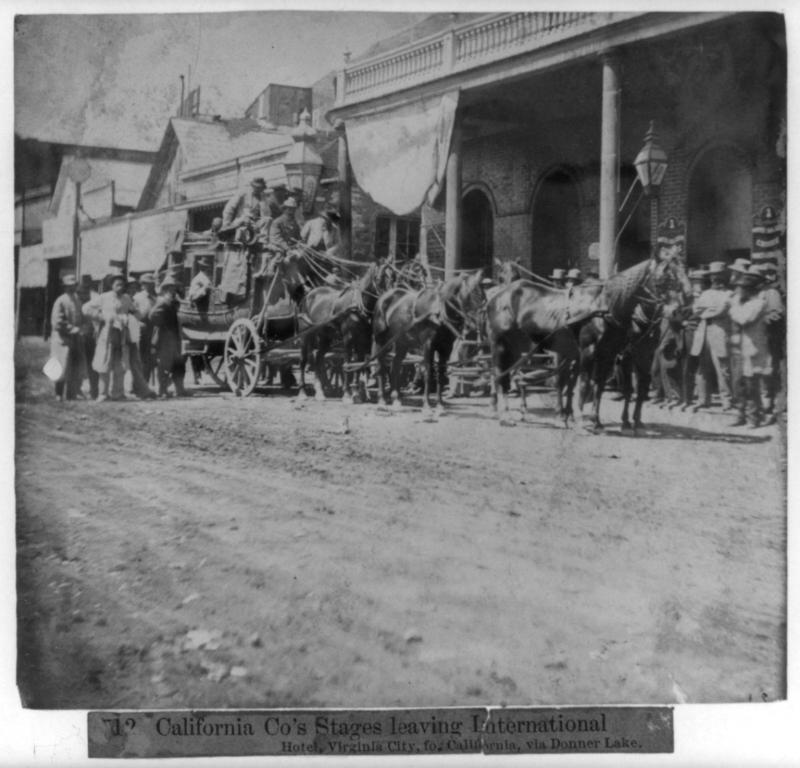
(Photo Credit: WNHPC)
One-hundred and seventeen toll roads were established in Nevada, many connecting Virginia City and the Comstock Lode to supply centers and processing mills in Truckee Meadows, Dayton and Carson City. Toll roads were so common famous Autor Mark Twain editorialized them in Roughing It.
… it was estimated that every citizen owned about three franchises, and it was believed that unless Congress gave the Territory another degree of longitude there would not be room enough to accommodate the toll-roads. The ends of them were hanging over the boundary line everywhere like a fringe
Mark Twain: Roughing It
Nevada continued to regulate toll roads after their completion, including setting fee schedules. One toll road in 1864 had a fee of: $2 per wagon, $0.25 for extra horses, $1.50 for a rider on horseback and $0.10 per sheep or hog. Franchises expired after 20 years when the road reverted to the county meaning the toll road era came to an end in 1884.
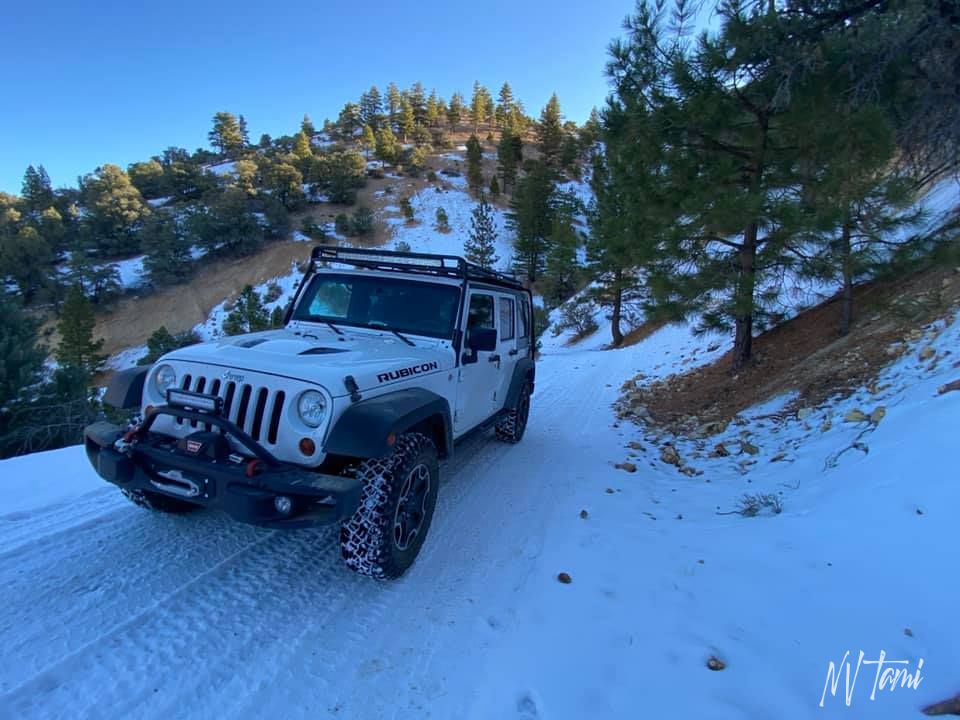
On November 29, 1861 Nevada Territorial Legislature granted a franchise to Geiger and Co. to construct a toll road linking Truckee Meadows to Virginia City. The route was dangerous but the most direct route linking Reno to Virginia City and the Comstock Lode.
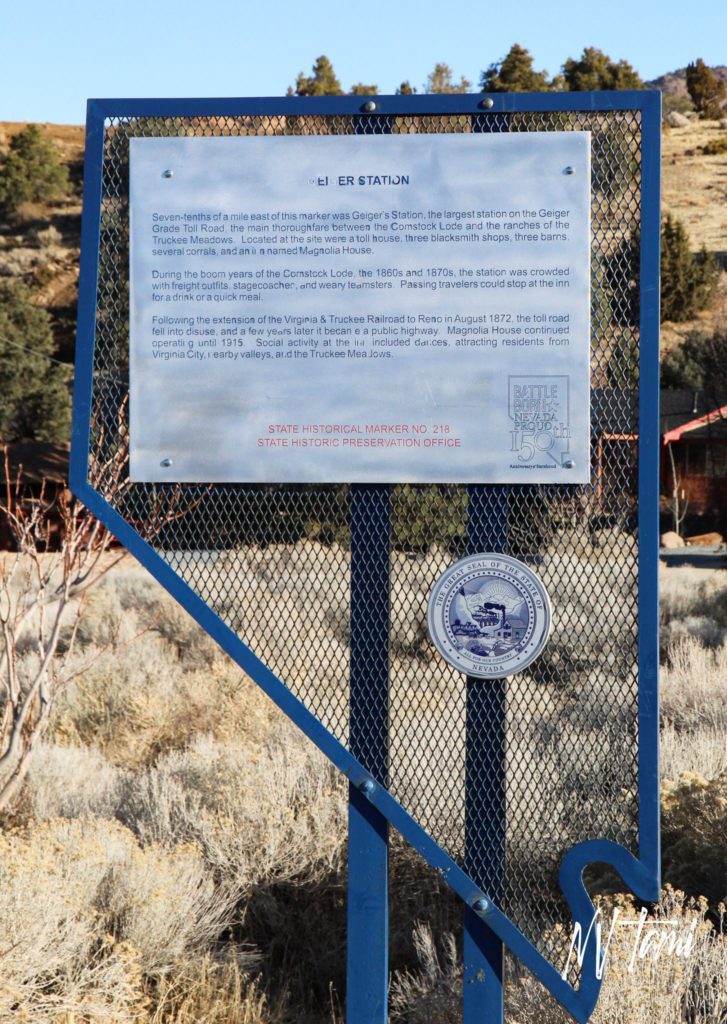
Geiger Toll Station: Truckee Meadows
Davison M. Geiger and John H. Tilton began road construction in 1862. The road, along with several toll stations was opened for commerce in 1863.
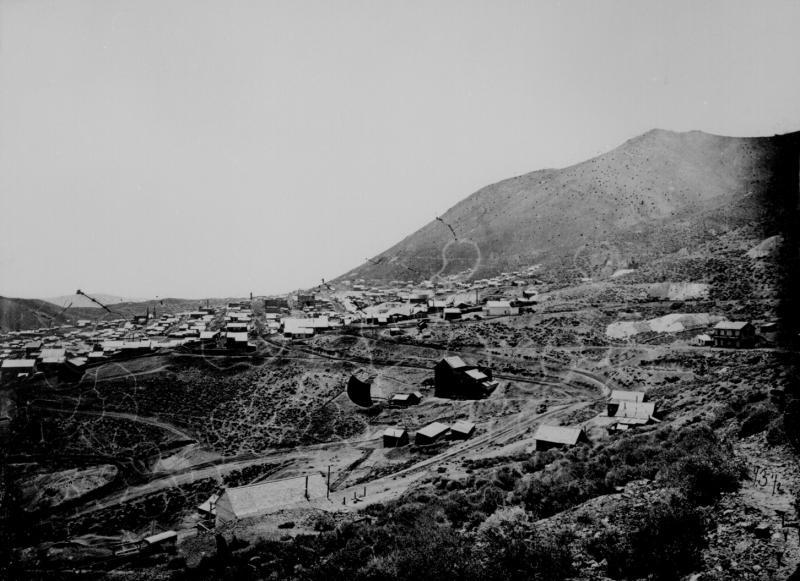
(Photo credit: WNHPC)
Containing hairpin turns and steep slopes, stage-coach drivers were forced to slow their pace at several locations. Not surprisingly, this made the route popular with stage robbers and sites came to be known by names including “Robber’s Roost.”
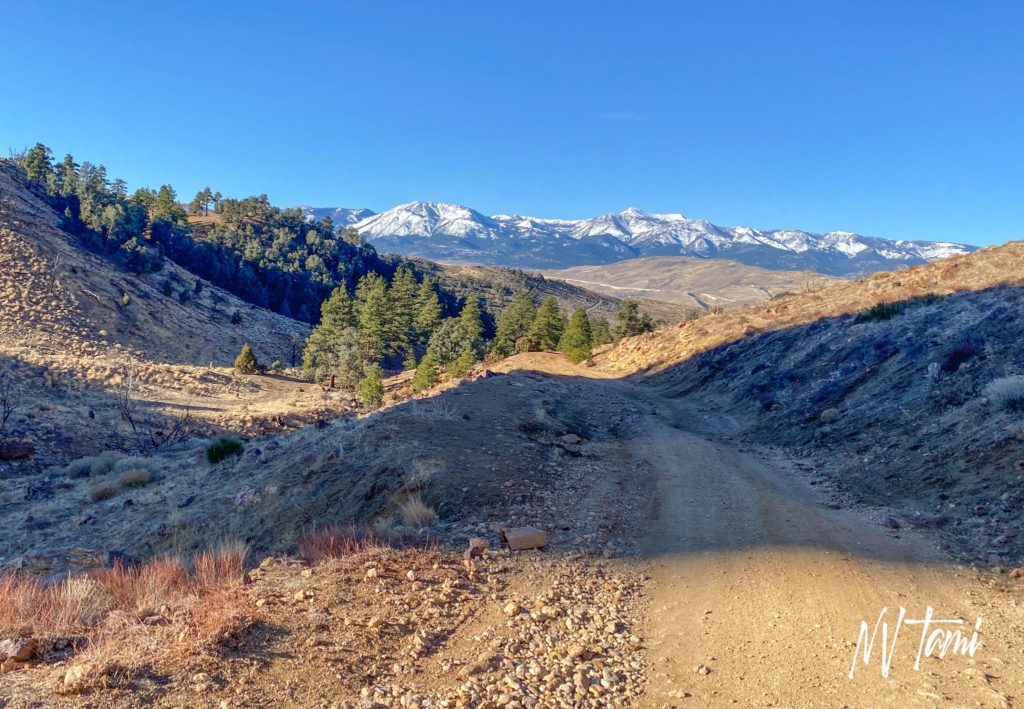
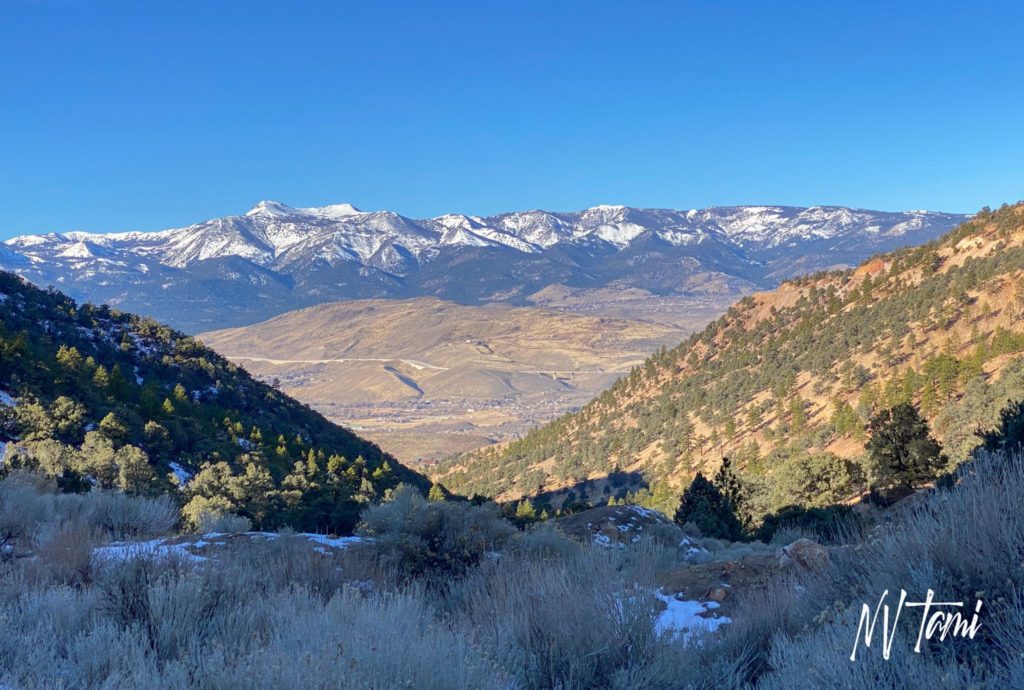
Infamous stage robber Black Bart robbed at least 28 Wells Fargo stagecoaches between 1875 and 1883 in Northern California. He was afraid of horses and committed robberies on foot. It is said he never fired his gun during a heist. He was known for is polite manner and leaving poems at several robberies. He served four years at San Quentin Prison and was paroled for good behavior. He was released from prison on January 21, 1888 and was last seen on February 28th.
Charles Earl Bowles, aka “Black Bart”
(Photo Credit: Wikipedia)

Some speculate Black Bart attempted his final robbery on Geiger Grade. The summer of 1888 at a blind corner of Geiger Grade, a masked bandit attempted to rob a stagecoach on foot and was met the wrong end of a 10-gauge shotgun. Shot dead, his body was thrown to the side of the road. Upon reaching Reno, the stage driver notified authorities and Story County Sherriff and coroner investigated. The shooting was determined to be justified and the body was buried on the side of the road. Several men who visited the scene believed the robber resembled pictures in the papers of Black Bart.
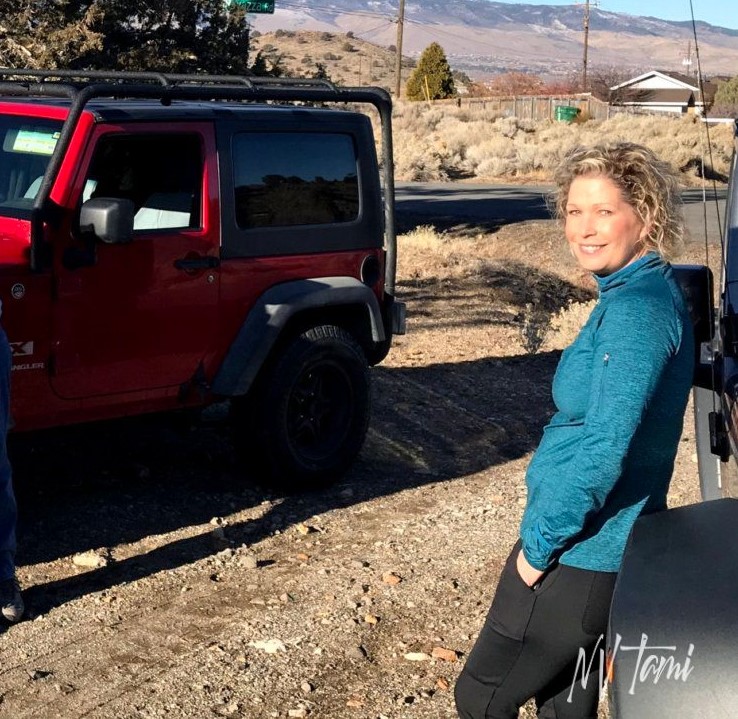
According to period maps, Geiger Grade became State Route 17 sometime before 1929. The grade was realigned and paved by the CCC in 1936 to allow for automobile traffic.
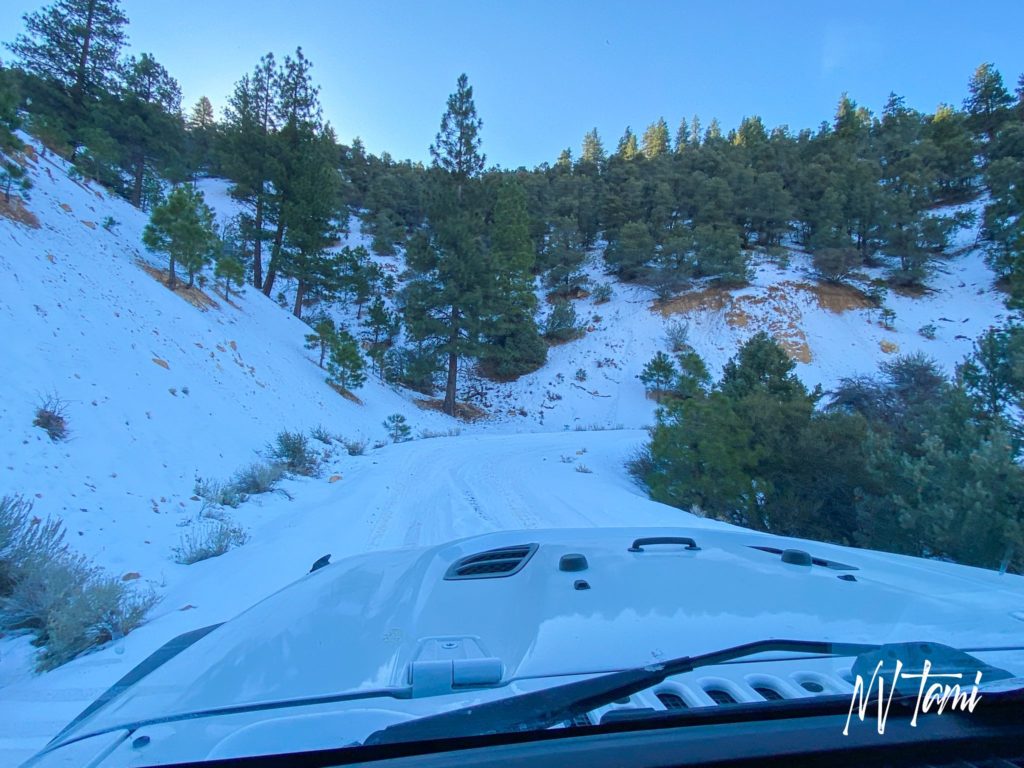
Some parts of Geiger never see sun during winter
In order to avoid descending potentially icy slopes, we began our trip in Truckee Meadows at Geiger Toll Station.
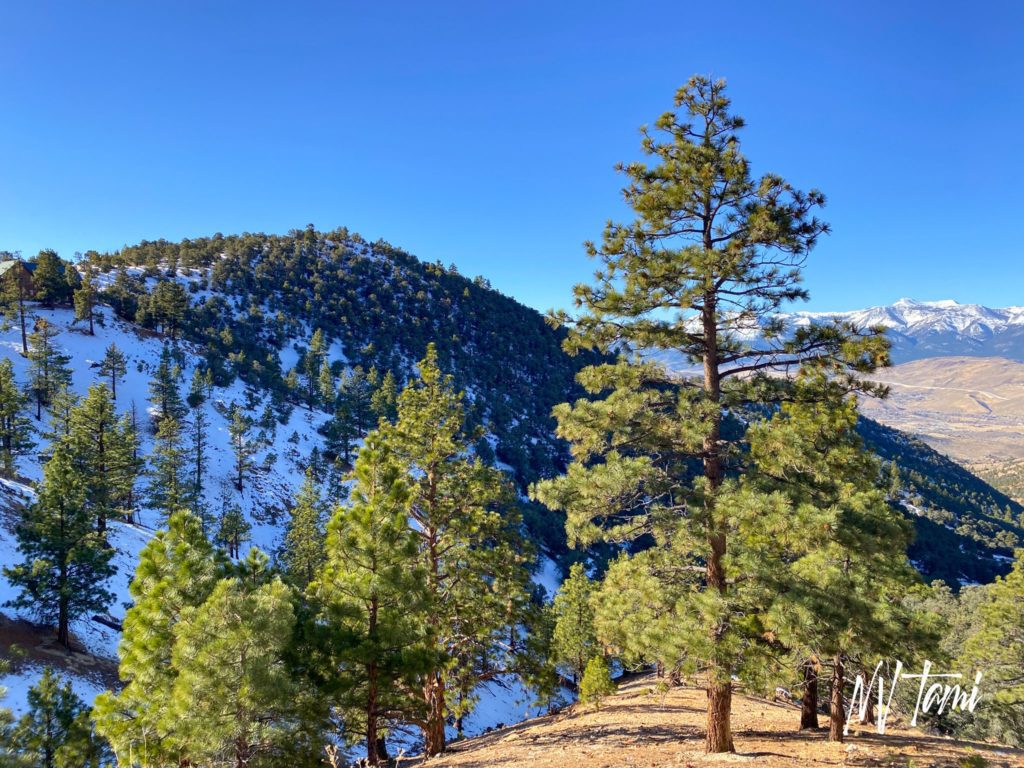
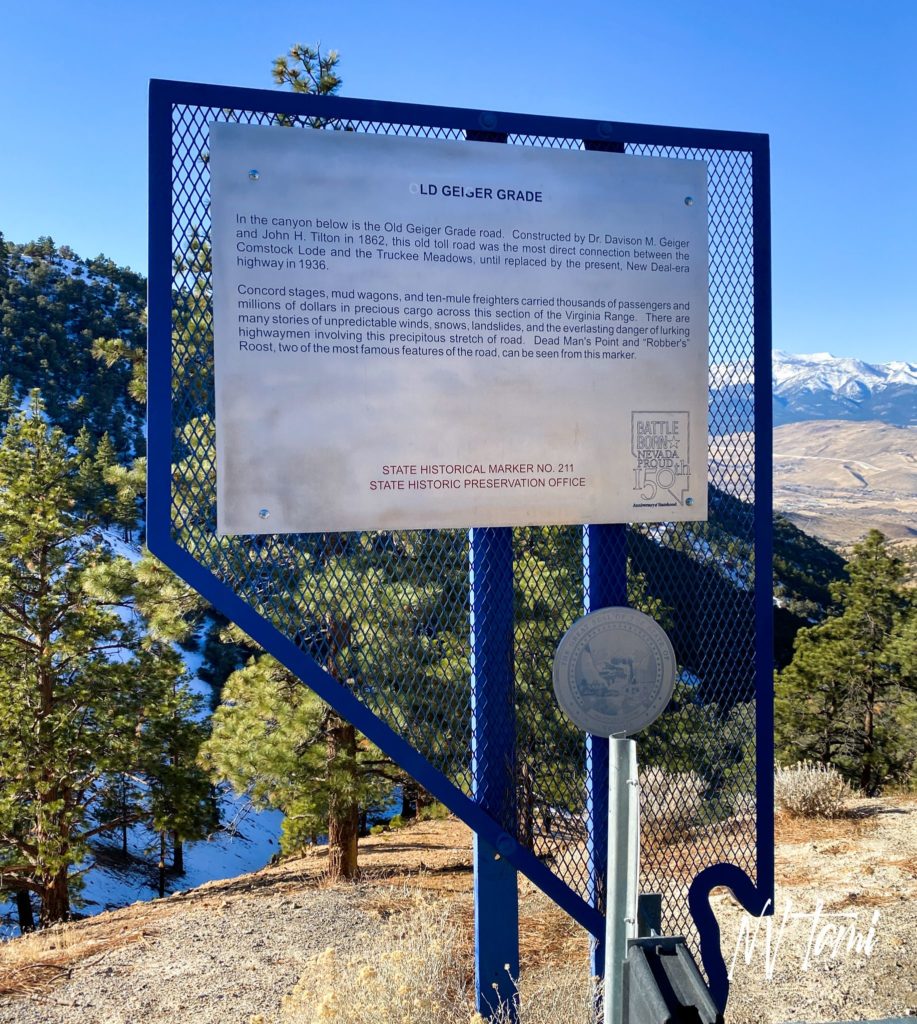
Nevada Historical Marker Overlooking Geiger Toll Road
We stopped several times along the trail to examine sections of the original road. We speculated which corner was “Robber’s Roost” and the grave of the unknown robber. Shonna and I found mountain lion tracks alongside the road.
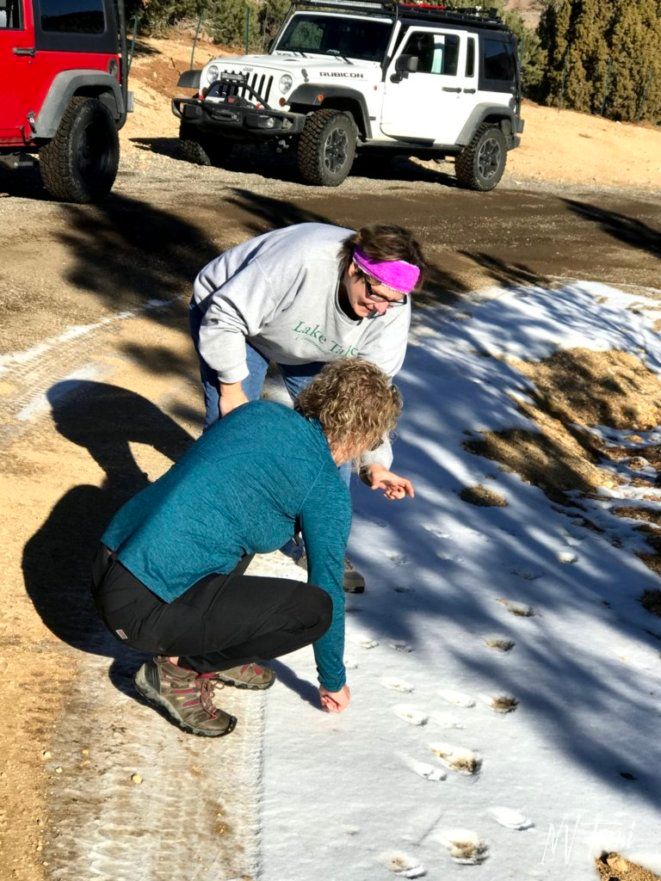

Friends Stephen, Shona and I made a loop on a beautiful winter day. Up Geiger Toll Road, backtracking town the modern Geiger Grade to an overlook of Geiger Toll Road, Geiger Grade Overlook CCC Camp. We attempted to make it to Lousetown at the top of Geiger, but turned back due to road conditions. We visited a few sites in Virginia City, including Combination Shaft and Yellow Jacket Mine II, before ending our day at the saddest grave in Gold Hill.
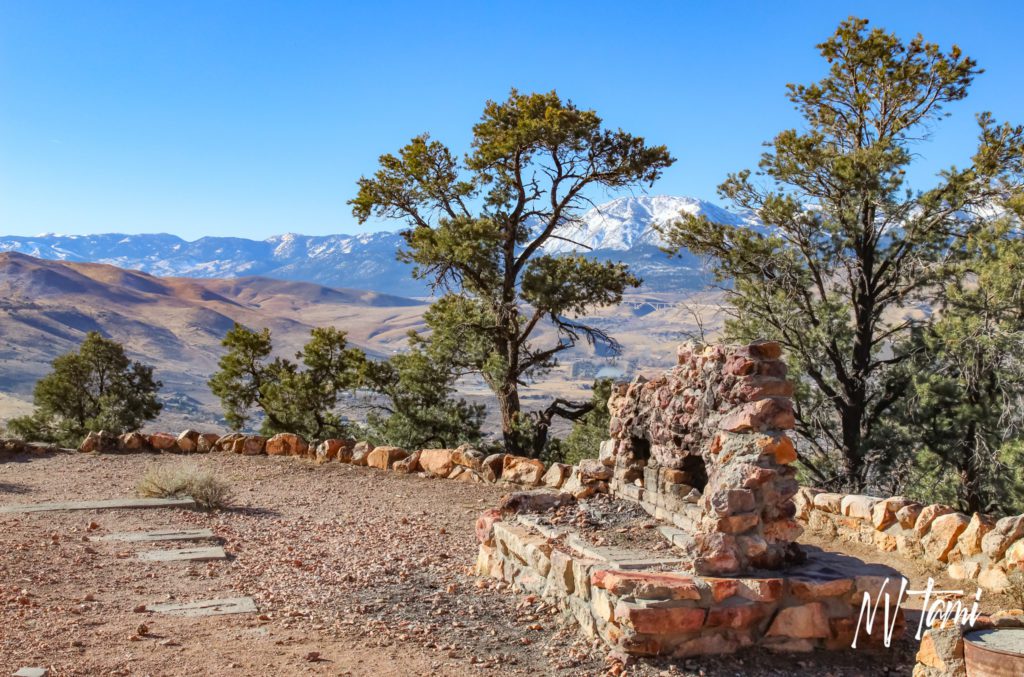
Geiger Grade CCC Campground
Visited 12-20-2020
References
- Basso, Dave. Nevada Historical Marker Guidebook. Nevada Publications, 1986. Page 211, 218.
- Black Bart: Black Bart Where di You Go????
- Gutebberg: Roughing It Complete by Mark Twain
- History.com: Black Bart makes his last stagecoach robbery
- Nevada Land Trust: Old Geiger Grade
- NoeHill Travels in the American West: Nevada: Geiger Lookout Wayside Park
- Only in Your State: This 150-Year-Old Road In Nevada Takes You On A Twisting Journey To A Gorgeous Overlook
- Western Nevada Historic Photo Collection: Virginia City Stagecoach 1866
- WikipediaL Black Bart (Outlaw)
- Wikipedia: Civilian Conservation Corps
- Wikipedia: Nevada State Route 341
Stephen says
Great research
Tami says
Thank you!
Therese says
Where is Jumbo Grade at?
Tami says
Between Washoe Valley and Virginia City.